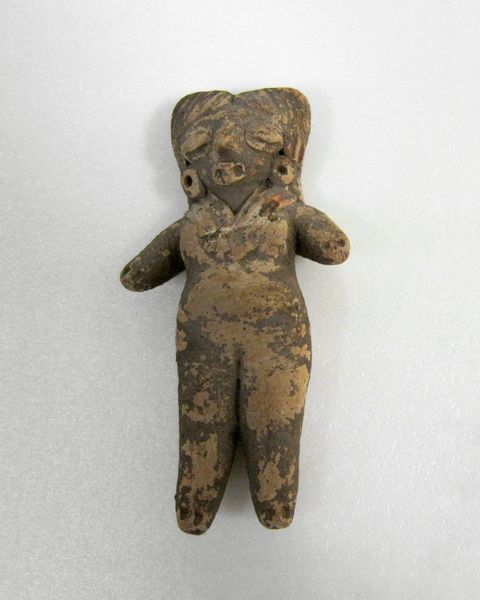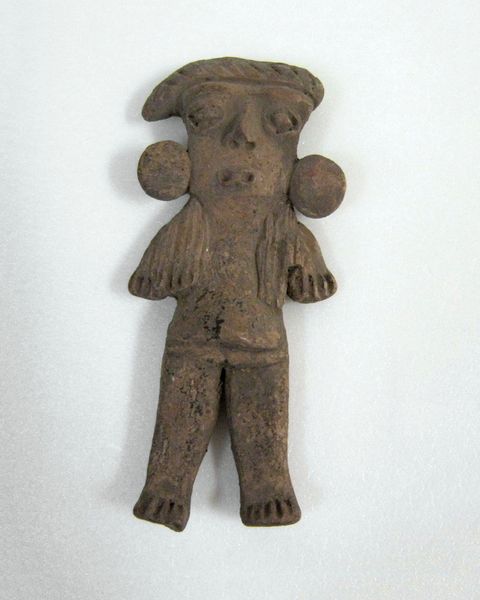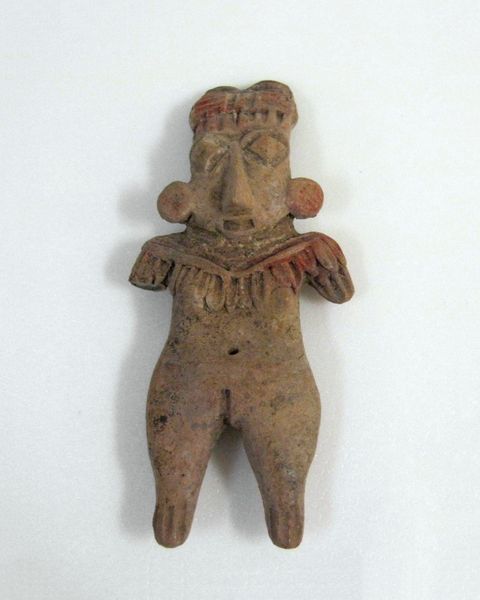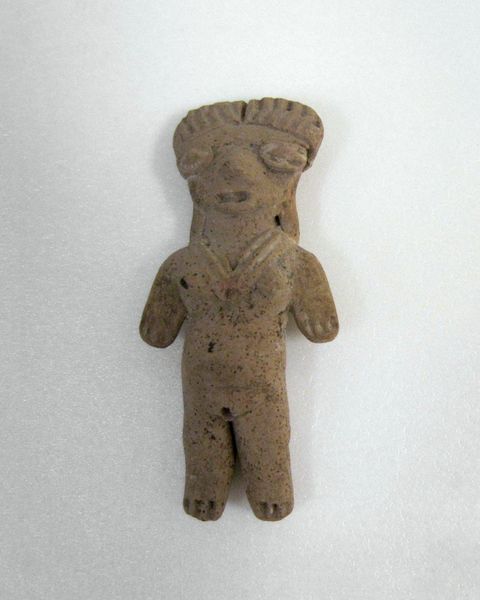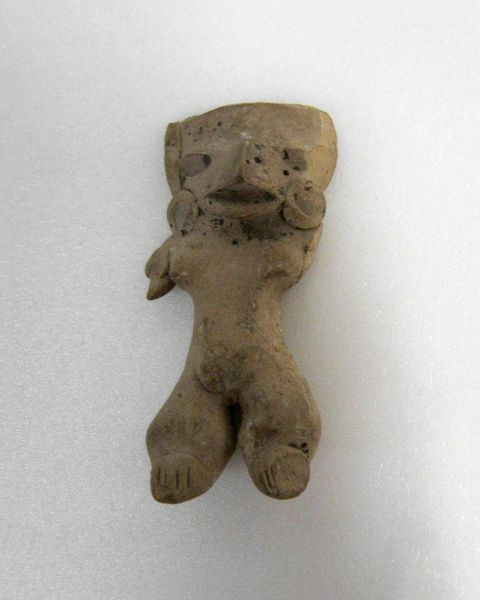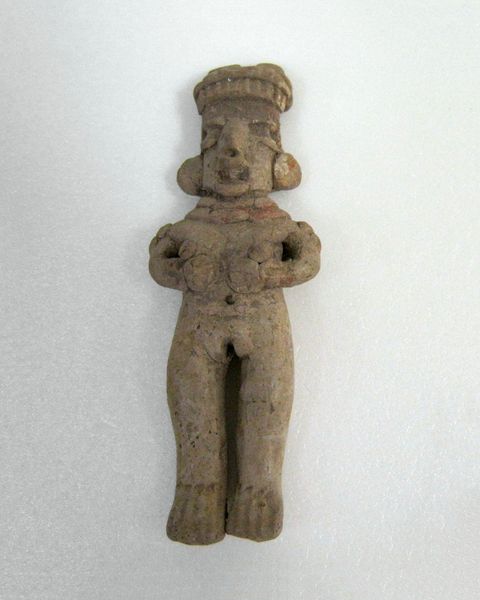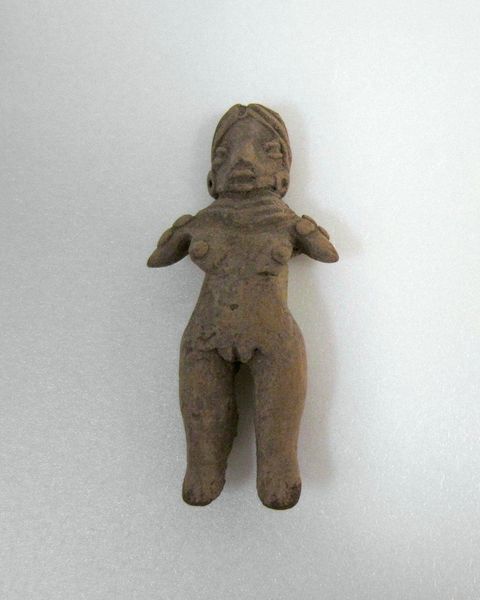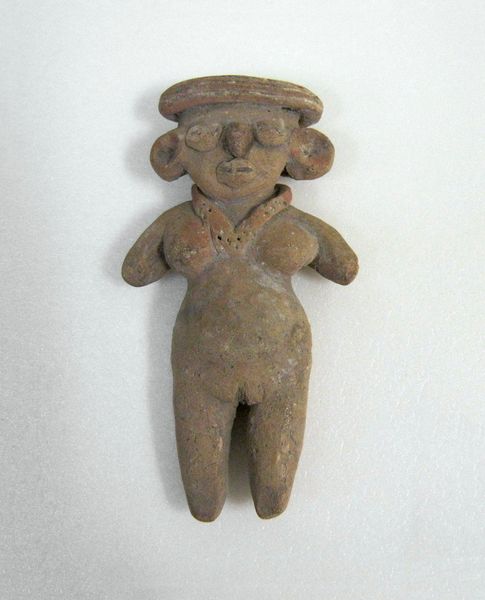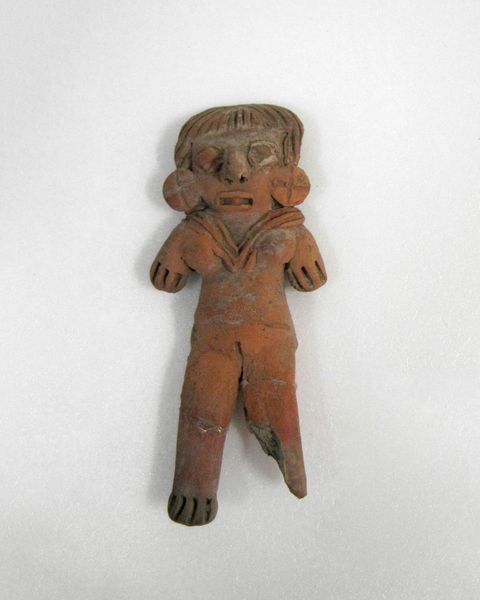
earthenware, sculpture
#
sculpture
#
figuration
#
earthenware
#
sculpture
#
indigenous-americas
Dimensions: 3 3/4 x 1 3/4 x 7/8 in. (9.5 x 4.4 x 2.2 cm)
Copyright: Public Domain
Curator: Immediately, I feel a deep sense of humility looking at this earthenware sculpture. The simplicity is arresting. Editor: Indeed. Let me introduce "Standing Female Figure." This piece was created sometime between 200 and 700 AD by the Michoacan people, part of the rich history of the Indigenous Americas. It resides here at the Minneapolis Institute of Art. Curator: The raw, earthy material is incredibly potent. Even in this image, the reddish hue feels so connected to the land, to the source. I'm fascinated by those three small perforations on the chest–almost like symbolic wounds, or perhaps connection points. Editor: Those perforations certainly invite speculation. The figure's stoic stance raises questions about gender roles and representations within Michoacan society. It could be argued the statue embodies the strength of Indigenous women and their resistance to colonialism's patriarchal forces, but interpretations might also vary wildly depending on specific cultural and ritual contexts that are now inaccessible. Curator: Right. While such sociopolitical factors undeniably play a role, my initial focus centers on symbolic functions. Are the three perforations representing the transition of stages in female maturation? Is the raw state of the earthenware clay suggesting that these pieces may have been deliberately buried during ceremonial cycles or placed near bodies to return to the womb-like earth and embrace their final resting point? It evokes a powerful emotional narrative of cyclical regeneration. Editor: These figures also need to be considered within trade routes and exchanges of materials across what is now known as Mexico and the American Southwest. These sculptures, even at an intimate scale, can signify a cultural network or hierarchy. Its "indigenous" origins don't exclude external interactions or political undertones related to the imposition of identities upon certain groups. Curator: A reminder that the past isn't an isolated landscape of quaint archetypes, I concur. Though that raw emotionality is certainly present! Editor: Ultimately, looking at her makes me ponder representation, power, and the weight of history upon a seemingly unassuming object. Curator: For me, this work bridges epochs, carrying whispers of both sorrow and solace from civilizations that understood existence as something profoundly entwined.
Comments
No comments
Be the first to comment and join the conversation on the ultimate creative platform.

